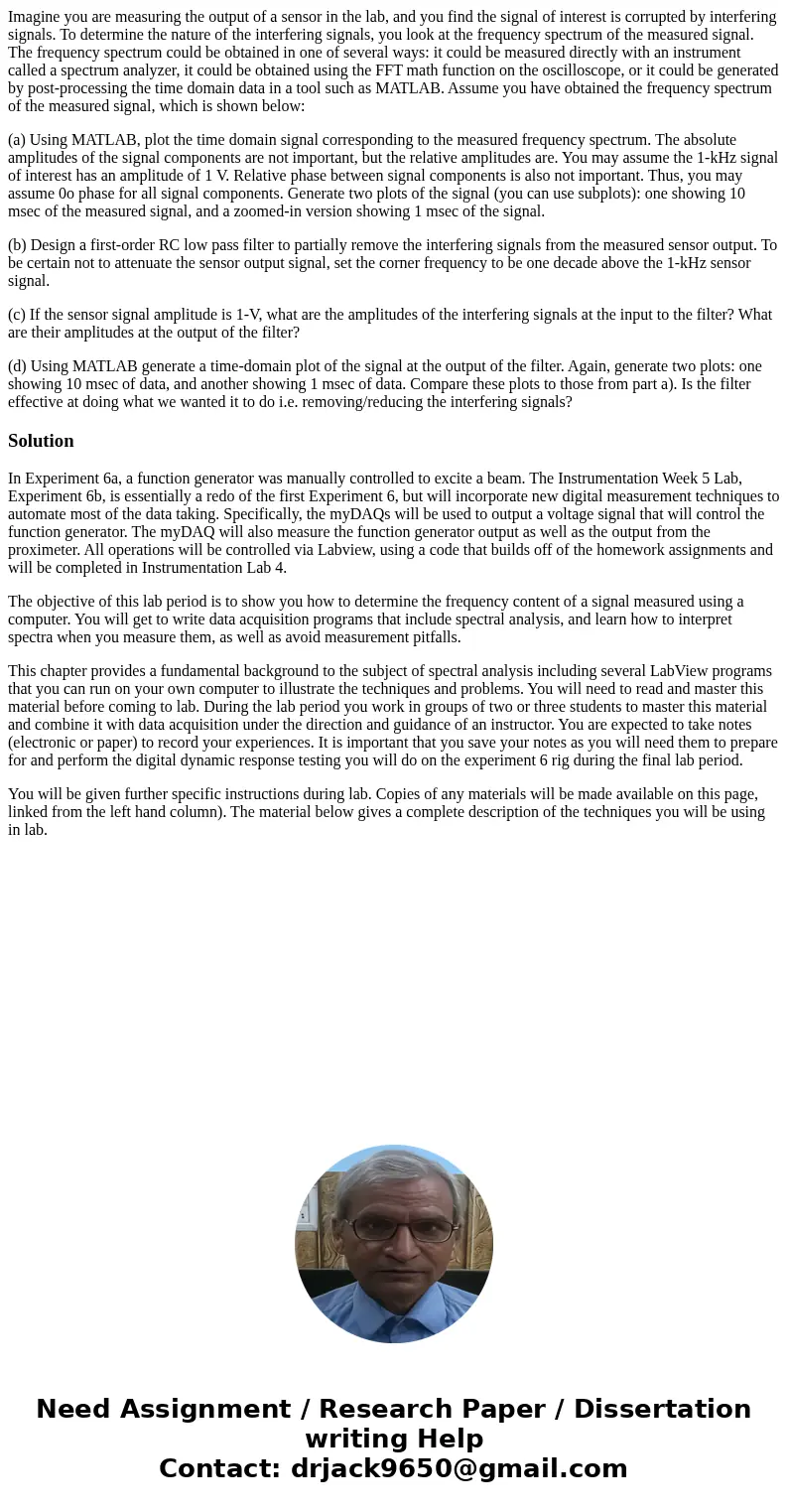Imagine you are measuring the output of a sensor in the lab
Imagine you are measuring the output of a sensor in the lab, and you find the signal of interest is corrupted by interfering signals. To determine the nature of the interfering signals, you look at the frequency spectrum of the measured signal. The frequency spectrum could be obtained in one of several ways: it could be measured directly with an instrument called a spectrum analyzer, it could be obtained using the FFT math function on the oscilloscope, or it could be generated by post-processing the time domain data in a tool such as MATLAB. Assume you have obtained the frequency spectrum of the measured signal, which is shown below:
(a) Using MATLAB, plot the time domain signal corresponding to the measured frequency spectrum. The absolute amplitudes of the signal components are not important, but the relative amplitudes are. You may assume the 1-kHz signal of interest has an amplitude of 1 V. Relative phase between signal components is also not important. Thus, you may assume 0o phase for all signal components. Generate two plots of the signal (you can use subplots): one showing 10 msec of the measured signal, and a zoomed-in version showing 1 msec of the signal.
(b) Design a first-order RC low pass filter to partially remove the interfering signals from the measured sensor output. To be certain not to attenuate the sensor output signal, set the corner frequency to be one decade above the 1-kHz sensor signal.
(c) If the sensor signal amplitude is 1-V, what are the amplitudes of the interfering signals at the input to the filter? What are their amplitudes at the output of the filter?
(d) Using MATLAB generate a time-domain plot of the signal at the output of the filter. Again, generate two plots: one showing 10 msec of data, and another showing 1 msec of data. Compare these plots to those from part a). Is the filter effective at doing what we wanted it to do i.e. removing/reducing the interfering signals?
Solution
In Experiment 6a, a function generator was manually controlled to excite a beam. The Instrumentation Week 5 Lab, Experiment 6b, is essentially a redo of the first Experiment 6, but will incorporate new digital measurement techniques to automate most of the data taking. Specifically, the myDAQs will be used to output a voltage signal that will control the function generator. The myDAQ will also measure the function generator output as well as the output from the proximeter. All operations will be controlled via Labview, using a code that builds off of the homework assignments and will be completed in Instrumentation Lab 4.
The objective of this lab period is to show you how to determine the frequency content of a signal measured using a computer. You will get to write data acquisition programs that include spectral analysis, and learn how to interpret spectra when you measure them, as well as avoid measurement pitfalls.
This chapter provides a fundamental background to the subject of spectral analysis including several LabView programs that you can run on your own computer to illustrate the techniques and problems. You will need to read and master this material before coming to lab. During the lab period you work in groups of two or three students to master this material and combine it with data acquisition under the direction and guidance of an instructor. You are expected to take notes (electronic or paper) to record your experiences. It is important that you save your notes as you will need them to prepare for and perform the digital dynamic response testing you will do on the experiment 6 rig during the final lab period.
You will be given further specific instructions during lab. Copies of any materials will be made available on this page, linked from the left hand column). The material below gives a complete description of the techniques you will be using in lab.

 Homework Sourse
Homework Sourse